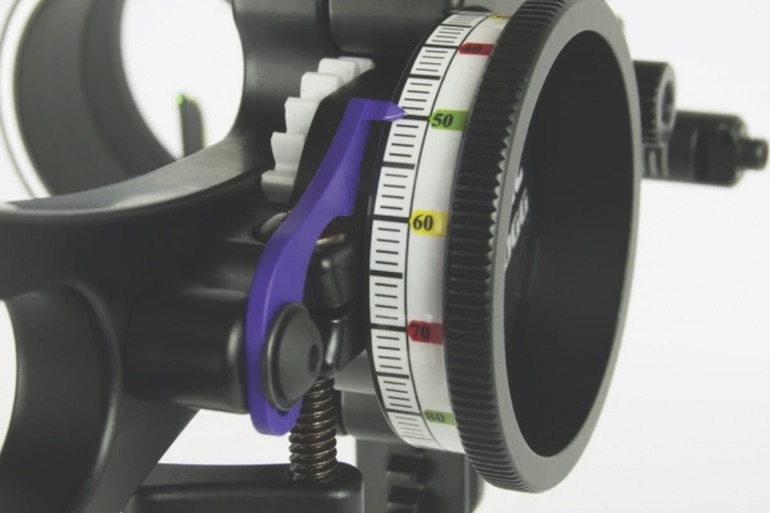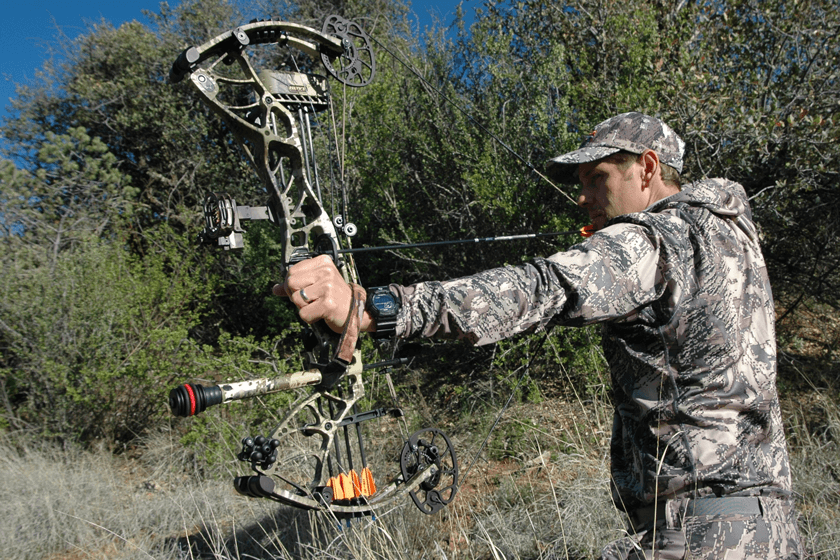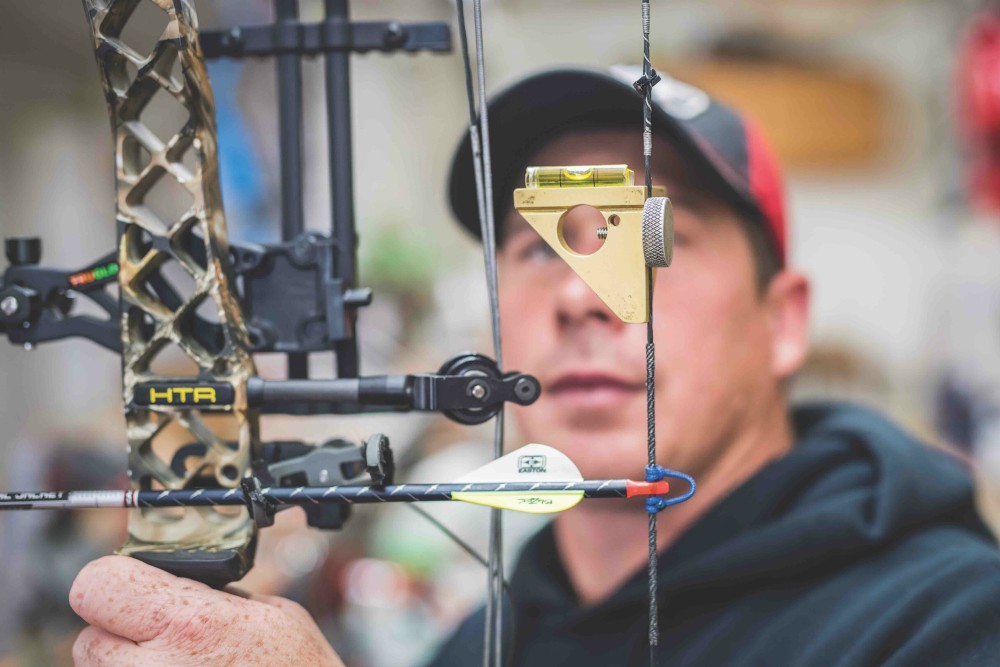To adjust compound bow sights, follow these steps: loosen the sight screws using an allen wrench, move the sight left or right to adjust windage, move the sight up or down to adjust elevation, and then tighten the screws. Properly adjusting compound bow sights is crucial for accurate aiming and shooting.
Whether you are a beginner or an experienced archer, making sight adjustments is a necessary skill to ensure consistent and effective shooting. By understanding the process and taking the time to calibrate your sights, you can optimize your aim and increase your accuracy on the target.
We will walk you through the complete steps of adjusting compound bow sights, so let’s get started!

Credit: www.coverfly.com
Understanding The Different Types Of Bow Sights
Bow sights are essential for accurate shooting when using a compound bow. They assist archers in aiming at their target and help maintain consistent accuracy. There are several types of bow sights available, each with its own advantages and characteristics.
In this section, we will explore the four main types of bow sights: pin sights, pendulum sights, single-pin sights, and adjustable sights.
Pin Sights:
Pin sights are the most common type of bow sight and consist of multiple pins that are adjustable for various distances. These pins are usually fiber optic and come in different colors, making it easier to see and align with the target.
Pin sights usually have three to five pins, each set at a specific yardage. Here’s how they work:
- Each pin corresponds to a particular distance. For example, the top pin might be set for 20 yards, the second pin for 30 yards, and so on.
- Aligning the appropriate pin with the target helps ensure accurate shot placement.
- Adjusting pin sights involves moving the pins up or down, left or right, depending on the desired yardage and elevation factors.
Pendulum Sights:
Pendulum sights, also known as treestand sights, are specifically designed for bowhunters shooting from an elevated position. These sights automatically compensate for the angle of the shot when targeting from a treestand. Here’s how they work:
- The pendulum sight’s swinging mechanism alters the pin’s angle in response to the tilt of the bow.
- This adjustment compensates for the gravitational pull, ensuring the archer aims accurately and avoids shooting high.
- Pendulum sights are highly recommended for tree stand hunting to help maintain consistent accuracy.
Single-Pin Sights:
Single-pin sights consist of a solitary pin, offering a clear field of vision and a more precise aiming point. These sights are ideal for archers who prefer simplicity and focus on a solitary target. Here’s how they work:
- The single pin is adjustable to different yardages, similar to pin sights.
- Archers adjust the pin manually according to the desired distance before taking a shot.
- Single-pin sights are renowned for their accuracy and can help improve focus by eliminating distractions caused by multiple pins.
Adjustable Sights:
Adjustable sights, also known as movable sights, are versatile options that allow users to adjust the sight’s entire housing and pin system. These sights provide flexibility for shooting various distances accurately. Here’s how they work:
- The entire sight housing can be moved in different directions to align the target precisely.
- Archers can fine-tune the pins and housing’s position to match specific yardages or environmental conditions.
- Adjustable sights are popular among competitive archers who require precise targeting when shooting at varying distances.
Understanding the different types of bow sights is crucial when it comes to choosing the right one for your needs. Pin sights provide versatility with multiple pins adjustable for different yardages. Pendulum sights compensate for angled shots when hunting from treestands.
Single-pin sights offer precision by focusing on a single aiming point, while adjustable sights provide maximum flexibility for shooting at various distances. By selecting the bow sight that aligns with your shooting style and requirements, you can enhance your accuracy and overall archery experience.
Assessing Your Shooting Form For Optimal Accuracy
Having the proper shooting form is crucial when it comes to shooting a compound bow with accuracy and precision. In this section, we will discuss the key aspects of your shooting form that you need to assess in order to achieve optimal accuracy.
Let’s dive in:
Stance And Posture:
- Stand with your feet shoulder-width apart, ensuring a solid base for balance.
- Keep your body relaxed but maintain a slight forward lean from your hips.
- Distribute your weight evenly between both feet to ensure stability.
- Avoid leaning back or hunching your shoulders, as this can impact your aim and overall accuracy.
Grip And Hand Placement:
- Grip the bow handle firmly but avoid squeezing too tightly.
- Maintain a consistent grip throughout the entire shooting process.
- Place your hand comfortably around the bow handle, ensuring that your knuckles are in line with the bow’s riser.
- Keep your wrist straight and avoid any excessive twisting or bending.
Anchor Point:
- Establish a consistent anchor point by bringing your hand and string hand to the same spot on your face for every shot.
- A common anchor point is the side of the face, just below your dominant eye.
- Ensure that your anchor point provides a solid reference for consistent aiming and proper alignment.
Peep Sight Alignment:
- Align the peep sight with your dominant eye by adjusting its position on the bowstring.
- Look through the peep sight and ensure that your eye is directly in line with it.
- Achieve proper alignment by adjusting the peep sight’s position until you have a clear and centered view through it.
Remember, assessing and refining your shooting form takes practice and patience. By consistently implementing these key aspects of shooting form, you can enhance your accuracy and overall shooting performance with your compound bow. Happy shooting!
Step-By-Step Guide To Adjusting Bow Sights
Understanding Windage And Elevation
Adjusting bow sights is a crucial step in ensuring accuracy and precision with your compound bow. To achieve consistent and accurate shots, you need to understand the concepts of windage and elevation. Here’s a step-by-step guide to help you adjust your bow sights properly:
- Windage: Windage refers to left-to-right adjustments of your sights. It allows you to compensate for the wind’s effect on your arrow’s flight path. To make windage adjustments:
- Loosen the windage knob located on your sight.
- Move the entire sight housing to the left or right, depending on the direction you want to adjust.
- Tighten the windage knob once you’ve made the necessary adjustment.
- Elevation: Elevation adjustments control the vertical placement of your sight. Proper elevation adjustments are essential for accurately hitting targets at different distances. Here’s how to adjust your sight’s elevation:
- Locate the elevation knob on your sight and loosen it.
- Move the sight housing up or down until the desired point of impact is achieved.
- Once you’ve made the adjustment, tighten the elevation knob to secure the sight in place.
Setting The Correct Pin Placement
Proper pin placement is vital for accurate shooting. The right placement will vary depending on factors such as your shooting style and the type of target you’re aiming for. Follow these steps to set the correct pin placement:
- Start by standing at a distance that you’re comfortable shooting.
- Aim at the center of the target and take a shot.
- Observe the point of impact on the target.
- Make adjustments to the pin placement by moving it up, down, left, or right, depending on where the arrow hit the target.
- Take additional shots and continue to make small adjustments until your shots consistently hit the target where you aim.
Using The Proper Tools For Adjustments
To successfully adjust your bow sights, you’ll need the following tools:
- Bubble level: This tool ensures that your bow is level, allowing for more accurate sight adjustments.
- Allen wrench: To loosen and tighten various bolts and knobs on your sight.
- Tape measure or rangefinder: Necessary for measuring distances accurately.
Fine-Tuning Your Sights For Optimal Accuracy
Once you’ve made the initial adjustments, it’s essential to fine-tune your sights for optimal accuracy. Follow these steps to achieve the best possible results:
- Start by shooting a few arrows at your desired distance.
- Analyze the grouping of your shots on the target.
- If the groupings are consistently off-center, make slight adjustments to your windage and elevation until the grouping is centered.
- Continue shooting and making minor adjustments until you achieve a tight, consistent group of shots.
Remember, practice makes perfect. It may take some time and experimentation to find the right sight adjustments that work best for you. With patience and consistent practice, you’ll become more comfortable and accurate with your compound bow.
Common Challenges And Troubleshooting Tips
When it comes to adjusting compound bow sights, there can be a few common challenges that arise. These challenges can sometimes be a bit frustrating, but with the right troubleshooting tips, you’ll be able to overcome them and get your sights dialed in just right.
In this section, we’ll explore some of these challenges and provide solutions to help you achieve accurate and consistent shots.
Sight Misalignment:
- One common challenge you may encounter is sight misalignment, where the sight pins don’t line up properly. This can lead to inaccurate aiming and inconsistent shots. Here are some troubleshooting tips to address this issue:
- Ensure that the sight housing is securely attached to the bow and aligned with the riser. If it’s loose or misaligned, adjust and tighten as necessary.
- Check if the sight pins are level using a bubble level. If they are not, adjust their alignment to make them level.
- Verify that the pins are centered within the peep sight or scope aperture. If they are off-center, make the necessary adjustments to center them.
Sight Pins Not Staying In Place:
- Another challenge you might face is the sight pins not staying in place after adjustments. This can be frustrating as it affects your shot consistency. Here are a few troubleshooting tips to address this issue:
- Tighten the sight pin screws or locking mechanisms to ensure they are secure. This will help prevent any movement during shots.
- Consider using thread-locking adhesive to secure the screws in place, ensuring they won’t come loose over time.
- Check for any signs of wear or damage to the sight pin components. If necessary, replace any worn out or defective parts to ensure stability.
Sight Tape Calibration Issues:
- Sight tape calibration issues can also pose a challenge when adjusting compound bow sights. Here are some troubleshooting tips to help you with sight tape calibration:
- Ensure that the sight tape is correctly aligned with the sight scale. If it’s off, reposition it to accurately reflect your distance markings.
- Verify that your peep sight or scope aperture is correctly aligned with the center of the target. This will help ensure accurate measurements for sight tape calibration.
- Double-check that you are using the correct sight tape for your chosen arrow speed and draw length. Using the wrong tape can lead to inaccurate calibrations.
Correcting For Different Distances And Angles:
- Adjusting for different distances and angles can also be a challenge when using compound bow sights. Here are some troubleshooting tips to aid you in correcting for these variations:
- Familiarize yourself with the sight’s adjustment knobs or dials for elevation and windage. These adjustments will help you compensate for different distances and angles.
- Practice shooting at various distances, gradually making the necessary adjustments to your sight settings. This will help you determine the correct settings for each distance.
- Consider using a rangefinder to accurately measure distances and ensure precise sight adjustments.
Remember, adjusting compound bow sights requires patience and practice. By troubleshooting common challenges and implementing the right techniques, you’ll be well on your way to achieving accurate and consistent shots.
Fine-Tuning Your Sights For Specific Archery Techniques
Whether you’re an experienced archer or new to the sport, adjusting your compound bow sights is key to achieving accurate shots. Fine-tuning your sights will vary depending on the specific archery technique you’re practicing. In this section, we’ll explore the adjustments needed for target shooting, bowhunting, 3d archery, and field archery.
Target Shooting
For target shooting, precision and consistency are paramount. Here’s how you can adjust your compound bow sights for optimal target shooting performance:
- Begin by ensuring that your bow is properly tuned and your arrows are of consistent weight and length.
- Start at a short distance, such as 10 yards, and adjust your sights accordingly to hit the center of the target consistently.
- Make small, gradual adjustments to your sight pins or sight tape to achieve accuracy at various distances.
- Practice shooting at different ranges to fine-tune your sights further.
- Consider using a sight leveling tool to ensure your bow sight is perfectly aligned.
Bowhunting
Successful bowhunting relies on precise aiming and the ability to adapt to different field conditions. To adjust your compound bow sights for bowhunting:
- Begin by setting your initial sighting distance at the desired hunting distance, typically around 20-30 yards.
- Experiment with different pin configurations, such as one pin or multiple pins, to accommodate various shot distances.
- Consider using an adjustable bow sight which allows you to quickly adjust for shots at varying distances.
- Spend time practicing in realistic hunting scenarios to familiarize yourself with different shooting angles and conditions.
- Regularly check and adjust your bow sights before each hunting season to account for any changes in equipment or shooting form.
3D Archery
3d archery simulates real-life hunting situations, requiring both accuracy and adaptability. Here’s how to adjust your compound bow sights for 3d archery:
- Determine the average shooting distance in a typical 3d archery course and set your initial sighting distance.
- Adjust your sights according to the target’s size and expected shooting angles.
- Practice shooting at various distances and angles to fine-tune your sight adjustments.
- Consider using a single-pin slider sight for ease of adjustment during the course.
- Develop a consistent form and shot execution routine to improve accuracy in dynamic shooting scenarios.
Field Archery
Field archery involves shooting at targets placed at different distances and terrains. Here’s how to adjust your compound bow sights for field archery:
- Set your initial sighting distance at the typical shooting distance for the field course, often ranging from 20-60 yards.
- Adjust your sight pins or sight tape to hit the center of the target at different distances.
- Familiarize yourself with the terrain and potential obstructions on the field course to make the necessary sight adjustments.
- Practice shooting in different weather conditions, accounting for factors like wind and lighting.
- Regularly assess and recalibrate your bow sights to maintain accuracy during field archery competitions.
Remember, adjusting your compound bow sights is an ongoing process. It’s crucial to practice regularly and fine-tune your sights to achieve consistent and accurate shots in various archery techniques.
Maintaining And Caring For Your Bow Sights
Whether you’re a beginner or a seasoned archer, properly maintaining and caring for your compound bow sights is essential in ensuring accurate and consistent shots. By taking the time to regularly clean and inspect your sights, practicing proper storage techniques, replacing batteries or light sources as needed, and even upgrading to higher-quality sights, you can optimize your shooting experience.
In this section, we will explore these important aspects of maintaining and caring for your bow sights.
Regular Cleaning And Inspection:
To ensure optimal performance, it’s crucial to keep your bow sights clean and in good condition. Follow these steps for regular cleaning and inspection:
- Wipe down your sights with a clean, dry cloth to remove any dirt or debris.
- Inspect the sight pins for any signs of damage, such as bent or loose pins.
- Check the sight housing to ensure it is securely attached to your bow.
- Use a small brush or compressed air to remove any dust or particles from the sight components.
- Lubricate any movable parts, such as adjustment screws, with a small amount of bowstring wax to prevent rust and corrosion.
Proper Storage To Prevent Damage:
To protect your bow sights from unnecessary damage, proper storage is key. Consider the following tips:
- Store your bow in a cool, dry place to prevent moisture buildup and rust.
- Use a bow case or sleeve to protect your sights from accidental impacts or scratches.
- Keep your bow away from extreme temperatures, as heat can cause damage to the sight components.
Replacing Batteries Or Light Sources:
If your bow sights are equipped with batteries or light sources, it’s important to replace them when necessary. Here’s what you need to know:
- Regularly check the battery or light source to ensure it’s functioning properly.
- If the lights appear dim or fail to illuminate, replace the batteries according to the manufacturer’s instructions.
- Use quality batteries or reliable light sources to maintain consistent brightness.
Upgrading To Higher-Quality Sights:
If you’ve been using the same bow sights for a while and are looking to improve your accuracy, consider upgrading to higher-quality sights. Here are some benefits:
- Higher-quality sights often feature advanced technology and materials that offer better durability and precision.
- Look for sights with micro-adjustable pins or multiple pin options to fine-tune your aim.
- Consider adjustable sights that offer different sight tapes for varying distances.
By following these maintenance and care tips for your compound bow sights, you can ensure their longevity and enhance your shooting performance. Remember to clean and inspect your sights regularly, store them properly, replace batteries or light sources as needed, and consider upgrading to higher-quality sights to take your archery skills to the next level.
Happy shooting!
Advanced Tips And Tricks For Experienced Archers
Adjusting For Environmental Factors
When it comes to advanced compound bow sight adjustment, experienced archers understand that accounting for various environmental factors is crucial for consistent accuracy. Here are some key considerations and tips for adjusting your compound bow sights in different conditions:
- Windage adjustment: Pay attention to the wind direction and strength. Adjust the windage knob on your sight to compensate for any wind drift that may affect your arrow’s flight path. Wind flags or indicators can also help you gauge wind speed and direction.
- Lighting conditions: Take into account the lighting conditions of your shooting range or hunting ground. Bright sunlight, low light, or even glare can impact your sight picture. Adjust the brightness or color of your sight’s fiber optic pin or led to optimize visibility in different lighting conditions.
- Temperature and humidity: Changes in temperature and humidity levels can affect arrow flight. Warmer temperatures may cause arrows to fly higher, while colder temperatures may result in arrows shooting lower. Adjust your sight accordingly to compensate for these variables.
- Elevation and angle: Shooting from an elevated position or at different angles can also impact your sight adjustment. When shooting uphill or downhill, make necessary adjustments based on the angle and distance to maintain accuracy.
Learning And Utilizing Sight Tapes
To fine-tune your compound bow sight for unparalleled accuracy, experienced archers often utilize sight tapes. These adhesive tapes provide a reference for precise adjustments based on your arrow trajectory and individual setup. Here are some tips to effectively use sight tapes:
- Shooting at multiple distances: Set up targets at different distances and shoot arrows to determine their impact points. Record the exact distance and mark those spots on your sight tape, adjusting it accordingly. This process allows you to create a customized sight reference for various distances.
- Applying sight tapes accurately: It’s crucial to properly apply and align the sight tape to ensure accuracy. Clean the sight surface thoroughly, apply the tape smoothly without any wrinkles, and align the reference marks with precision. A well-aligned sight tape ensures correct aiming points.
- Experimentation and refinement: Fine-tuning your sight tapes may require experimentation and adjustments. Gradually refine your sight tape markings by shooting groupings at various distances and making incremental modifications to ensure precise aiming points.
Using A Sight Level For Improved Accuracy
In addition to adjusting your compound bow sight, incorporating a sight level can significantly enhance your shooting accuracy. Here’s how to effectively use a sight level:
- Mounting the sight level: Attach the sight level to your bow’s sight bar or sight housing. Ensure it is securely mounted and aligned parallel to the ground or shooting surface.
- Checking bow cant: Bow cant refers to unintentional tilting of your bow during aiming and release. Use the sight level to detect and correct any bow cant, ensuring a consistently level position for each shot.
- Maintaining consistent form: By referencing the sight level during shooting, you can maintain consistent bow alignment and minimize any potential deviations that may impact accuracy.
Incorporating Mental Focus And Visualization Techniques
Apart from technical adjustments, experienced archers understand the importance of mental focus and visualization for consistent accuracy. Here are some techniques to incorporate into your shooting routine:
- Relaxation and concentration: Before shooting, take a moment to relax and clear your mind. Focus your attention on the target and visualize the perfect shot.
- Mental imagery: Use visualization techniques to mentally replay successful shots and imagine hitting the target with precision. Visualizing the entire shooting process, from drawing the bow to releasing the arrow, can enhance muscle memory and boost confidence.
- Shot routine and breathing: Develop a consistent shot routine that includes controlled breathing. Proper breathing techniques help calm your mind and steady your body during aiming and release.
- Positive self-talk: Practice positive self-talk and affirmations to boost confidence and eliminate negative thoughts. Constructive self-talk can help maintain focus, reduce anxiety, and increase overall shooting performance.
Remember, mastering these advanced tips and tricks for adjusting compound bow sights requires practice, patience, and a keen understanding of your individual shooting style and equipment.
Frequently Asked Questions For How To Adjust Compound Bow Sights?
How Do You Adjust Compound Bow Sights?
To adjust compound bow sights, start by loosening the screw on the windage knob and adjusting it left or right for horizontal adjustments. Then, loosen the elevation screw and adjust the pin up or down for vertical adjustments. Finally, tighten both screws to secure the settings.
Conclusion
To conclude, adjusting compound bow sights is an essential skill for any archer seeking accuracy and precision in their shots. By following the steps outlined in this blog post, you can ensure that your bow sights are properly aligned and calibrated.
Remember to start by setting the first pin at the desired distance and work your way towards the rest of the pins. Take your time and make small adjustments until you achieve the desired accuracy. It is important to practice with your adjusted sights to familiarize yourself with the changes.
Additionally, regularly checking and fine-tuning your bow sights will help maintain optimum performance. By mastering the art of adjusting compound bow sights, you’ll undoubtedly enhance your overall archery experience. So, grab your bow, follow these steps, and watch as your shots become more accurate and enjoyable.
Happy archery!

General Manager & Auditorial Head.
Killian Jake is a World Sports Traveler and hobbyist sports lover. By exploring different sorts of playing modules like indoor, outdoor, and many more. As for professionalism and writing, it’s helpful to give you the right suggestions on different games and sports.





